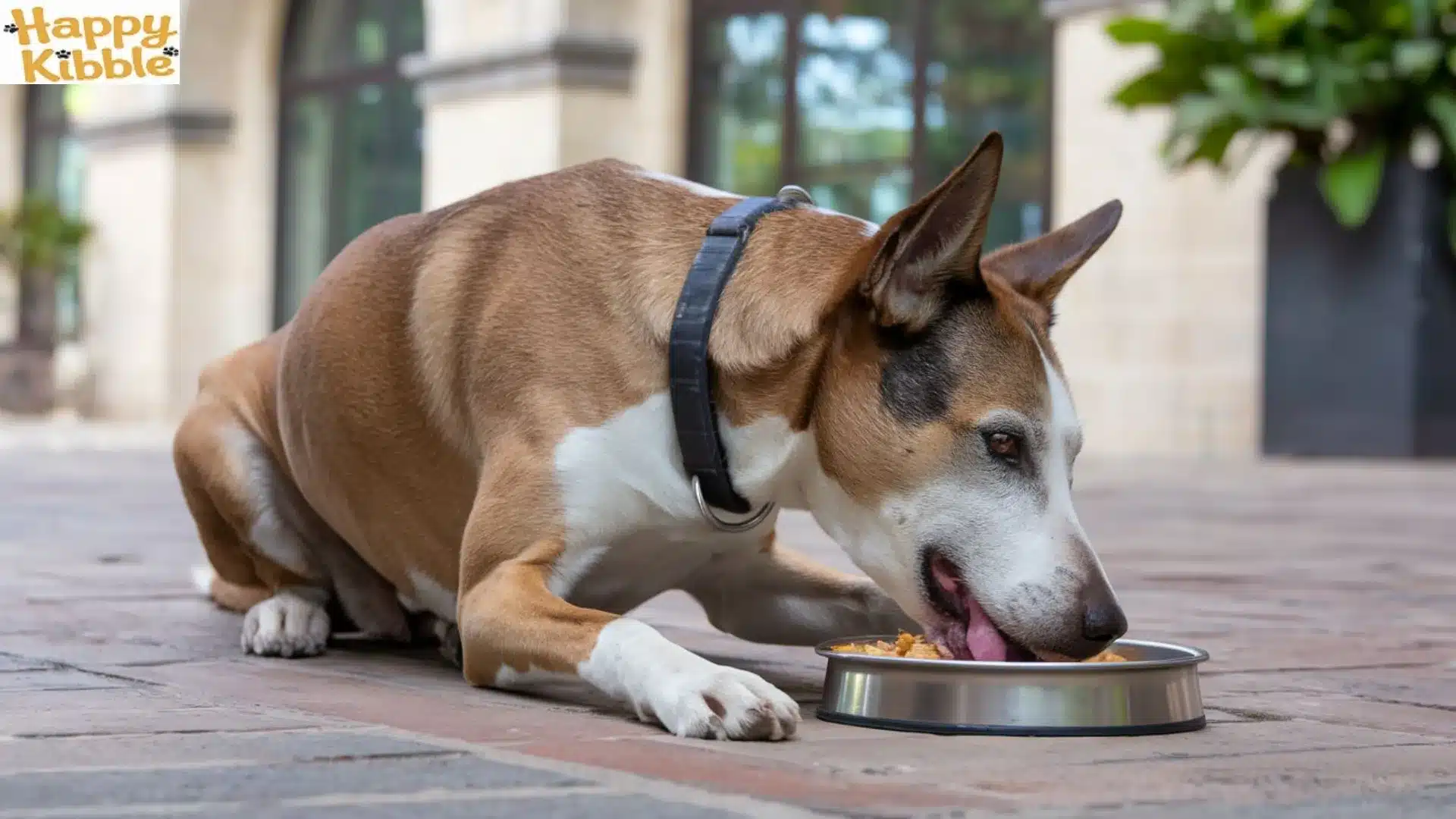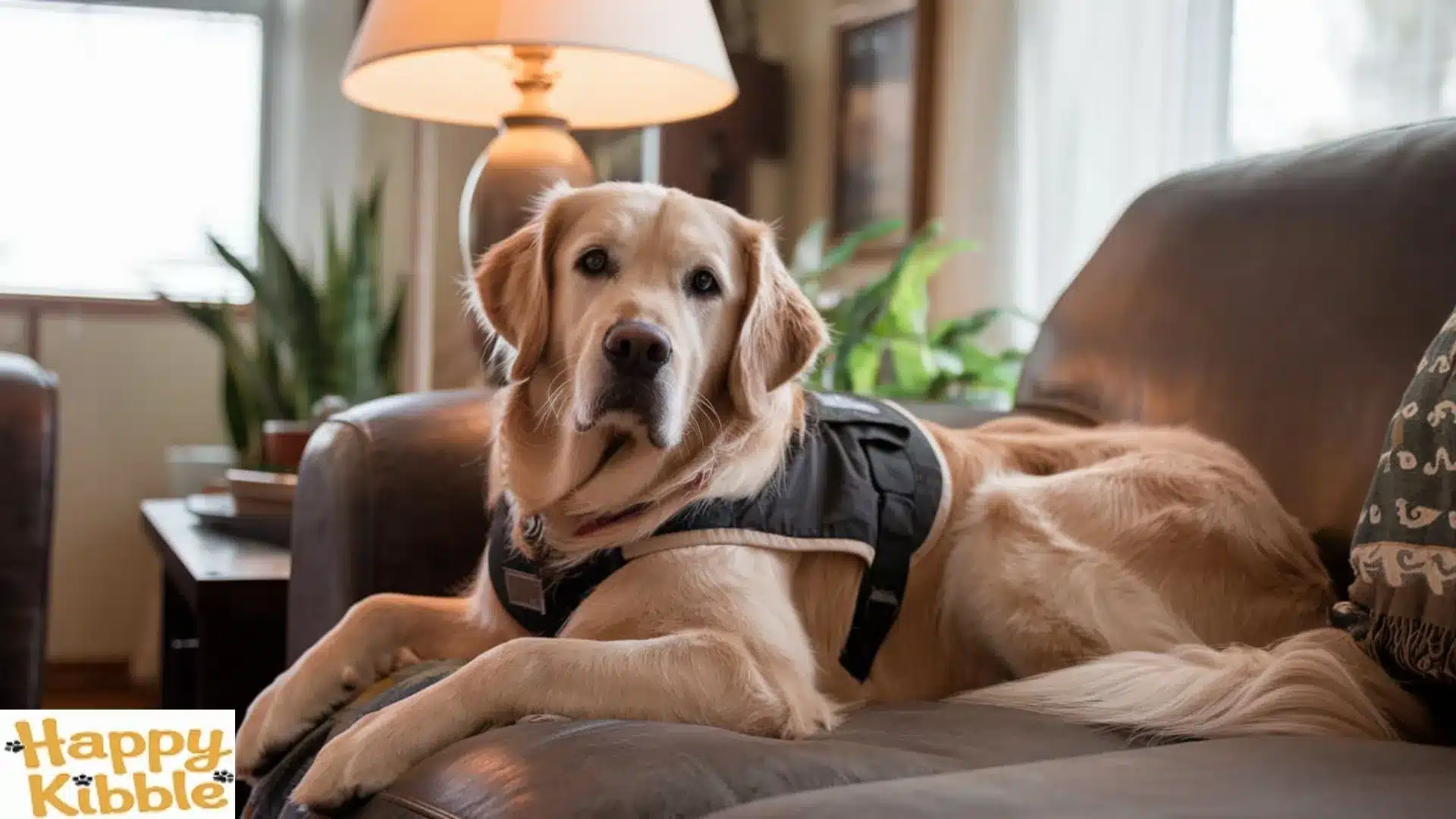Ever caught your furry friend sprawled out like a rug at dinnertime? You’re not alone! Many pet parents wonder why their dogs lay down to eat instead of staying on all fours like “normal” pups. As it turns out, this peculiar posture can tell us quite a bit about our canine companions. Let’s dig into the fascinating reasons behind this behavior and what it might mean for your four-legged friend.
The Science Behind Dogs’ Eating Postures

Dogs, like their wolf ancestors, are hardwired with certain instincts around food. In the wild, wolves often lie down to eat their prey, especially after a successful hunt. This natural behavior serves multiple purposes:
- It allows them to guard their food effectively
- They can use their paws to hold and manipulate their meal
- It’s simply more comfortable for extended feeding sessions
- It helps conserve energy after the exertion of hunting
Domestic dogs, despite thousands of years of evolution alongside humans, still retain many of these instinctual behaviors. When your pup lies down to eat, they might be tapping into this ancestral wisdom without even realizing it!
Must Read When Your Dog’s Tummy Gurgles and Won’t Eat
Natural Behavior vs. Learned Habit

Is your pup’s mealtime position nature or nurture? The truth is, it’s often a bit of both! While some dogs naturally prefer to lay down while eating, others develop this habit over time. Here’s what influences their choice:
🐾 Natural factors:
- Body size and shape
- Energy levels
- Age
- Breed tendencies
- Genetic predispositions
🏠 Environmental factors:
- Bowl height and placement
- Floor surface
- Past experiences
- Household routine
- Presence of other pets
The Impact of Early Experiences
A dog’s early life experiences can significantly shape their eating habits. Puppies who grew up in crowded environments might have learned to lay down to protect their food, while those raised in more relaxed settings might simply find it comfortable. Understanding your dog’s background can offer valuable insights into their mealtime behaviors.
A dog’s early life experiences can significantly shape their eating habits. Puppies who grew up in crowded environments might have learned to lay down to protect their food, while those raised in more relaxed settings might simply find it comfortable. Understanding your dog’s background can offer valuable insights into their mealtime behaviors.
Health Implications: When Should You Be Concerned?
Sometimes, a dog’s decision to lay down while eating isn’t just about comfort – it could signal underlying health issues. Let’s break down some potential medical reasons and what they might mean for your furry friend.
Hip Dysplasia and Arthritis
German Shepherds and other large breeds are particularly prone to hip dysplasia, which can make standing uncomfortable. This condition affects the hip joint, causing pain and difficulty in movement. Signs to watch for include:
BehaviorPossible IndicationAdditional NotesReluctance to riseJoint painMost noticeable after rest"Bunny hopping" gaitHip problemsEspecially when climbing stairsDecreased activityDiscomfortMay avoid previously enjoyed activitiesMuscle loss in back legsChronic conditionCan lead to further mobility issuesDifficulty with stairsJoint stiffnessOften worse in cold weather
“When dogs with arthritis or hip dysplasia lay down to eat, they’re often trying to alleviate pressure on painful joints,” explains Dr. Sarah Thompson, DVM. “It’s their way of making mealtime more manageable and less painful.”
Treatment Options for Joint Issues
If joint problems are causing your dog to lay down while eating, several treatment options are available:
- Medications:
- Anti-inflammatory drugs
- Joint supplements
- Pain management medications
- Physical Therapy:
- Hydrotherapy
- Targeted exercises
- Massage therapy
- Lifestyle Adjustments:
- Weight management
- Modified exercise routines
- Comfortable bedding
Other Medical Conditions to Consider
- Neck pain: Some dogs lay down if looking down into a bowl causes discomfort
- Can be related to intervertebral disk disease
- Might indicate muscle strain or injury
- Neurological issues affecting balance
- Vestibular disease
- Degenerative myelopathy
- Brain tumors (rare but possible)
- General weakness or fatigue
- Could indicate:
- Anemia
- Heart problems
- Respiratory issues
- Could indicate:
- Digestive discomfort
- Acid reflux
- Gastrointestinal disorders
- Food sensitivities
The Comfort Factor: Why Some Dogs Just Prefer to Lounge

Not every dog that lies down to eat has health issues! Many simply find it more relaxing. Think about it – wouldn’t you rather enjoy your meal while comfy on the couch? Dogs who eat lying down might be:
- Taking their time to savor their food
- Feeling more secure and relaxed
- Conserving energy (especially older dogs)
- Following their natural instincts
The Psychology of Canine Comfort
Dogs, like humans, have individual preferences for comfort. Some factors that might influence their choice to lay down while eating include:
- Stress levels
- A relaxed posture can indicate feeling safe
- Some dogs eat better when fully relaxed
- Past experiences
- Positive associations with lying down to eat
- Learned behaviors from other household pets
- Energy conservation
- Especially important for older dogs
- Can help with proper digestion
The Case of German Shepherds
German Shepherds often make headlines in discussions about eating habits and posture. These magnificent dogs are known for:
- Being prone to joint issues
- Having a naturally sloped back
- Needing careful weight management
Because of their build, many German Shepherds find it more comfortable to eat while lying down. This doesn’t always indicate a problem – it’s often just their preferred dining style!
Special Considerations for German Shepherds
- Structural differences
- Sloped back affects weight distribution
- May influence comfortable eating positions
- Common health concerns
- Higher risk of hip dysplasia
- Prone to degenerative myelopathy
- Exercise needs
- High energy levels require proper fuel
- Adequate rest during meals supports digestion
Supporting Your Dog’s Dining Comfort

Whether your pup’s prone position is a preference or prompted by medical conditions, here’s how you can help:
- Evaluate bowl height
- Raised feeders can help some dogs
- Others prefer floor-level dining
- Consider adjustable options for flexibility
- Consider surface traction
- Non-slip mats can provide stability
- Carpet or rubber surfaces offer better grip
- Some dogs prefer firm surfaces for support
- Monitor for changes
- Sudden shifts in eating habits warrant attention
- Keep track of other behavioral changes
- Document any patterns you notice
Creating the Ideal Feeding Environment
To support your dog’s comfort during meals, consider:
- Temperature control
- Cooler areas for thick-coated breeds
- Warm, draft-free spots for older or thin dogs
- Lighting
- Well-lit areas reduce anxiety
- Natural light when possible
- Noise levels
- Quiet, calm environments promote relaxation
- Consistent feeding locations
Weight Management and Eating Posture
A dog’s posture while eating can affect their:
- Digestion
- Eating speed
- Calorie intake
Tips for healthy weight management:
- Use slow-feeder bowls
- Monitor portion sizes
- Ensure regular exercise
- Consider feeding schedules
- Track treats and additional food sources
When to Consult Your Vet
While lying down to eat isn’t automatically cause for concern, certain red flags warrant professional attention:
- Sudden changes in eating position
- Signs of pain or discomfort
- Difficulty standing during other activities
- Changes in appetite or eating habits
What to Expect at the Vet
During a veterinary visit, your doctor might:
- Conduct a physical examination
- Assess joint mobility
- Check for pain responses
- Evaluate overall posture
- Recommend diagnostic tests
- X-rays for joint health
- Blood work to rule out systemic issues
- Neurological evaluations if needed
- Discuss treatment options
- Pain management strategies
- Physical therapy recommendations
- Dietary adjustments if necessary
Potential Treatments
Depending on the underlying cause, your vet might suggest:
- Medical interventions
- Anti-inflammatory medications
- Joint supplements
- Pain management protocols
- Physical therapy
- Targeted exercises
- Hydrotherapy
- Massage techniques
- Environmental modifications
- Elevated feeding stations
- Orthopedic feeding mats
- Modified living spaces
Expert Tips for Different Scenarios
Let’s look at specific situations and solutions:
- For older with arthritis:
- Orthopedic mats for comfort
- Pain management (vet-approved)
- Elevated feeding stations
- Multiple small meals throughout the day
- For anxious eaters:
- Quiet feeding locations
- Consistent routines
- Positive reinforcement
- Separate feeding areas in multi-pet households
- For speedy eaters:
- Slow-feeder bowls
- Food puzzles
- Multiple small meals
- Interactive feeding toys
Understanding Your Dog’s Body Language
Your dog’s posture during meals can tell you a lot! Watch for:
✅ Signs of comfort:
- Relaxed muscles
- Normal breathing
- Taking time to eat
- Wagging tail while eating
- Remaining in place after finishing
❌ Signs of discomfort:
- Tense body
- Rapid eating
- Reluctance to move
- Excessive licking of joints
- Difficulty settling into a position
The Importance of Observation
Regular observation of your dog’s eating habits can help you:
- Identify changes early
- Understand their preferences
- Spot potential health issues
- Adjust their feeding routine as needed
Breed-Specific Considerations
While any dog might choose to lay down while eating, certain breeds are more likely to exhibit this behavior:
- Large breeds prone to joint issues
- Great Danes
- Saint Bernards
- Newfoundlands
- Long-bodied dogs
- Dachshunds
- Corgis
- Basset Hounds
- Senior dogs of any breed
- Breeds with known health issues affecting mobility
- German Shepherds
- Labrador Retrievers
- Golden Retrievers
The Bottom Line
When it comes to dogs lying down to eat, there’s no one-size-fits-all explanation. Whether it’s comfort, health issues, or just personal preference, understanding your dog’s needs is key. By staying attentive to their behavior and working with your vet when needed, you can ensure your pup enjoys their meals in the most comfortable way possible.
Remember, every dog is unique – just like their human families! As long as your furry friend is happy, healthy, and enjoying their meals, their chosen dining posture is probably just perfect for them. Keep observing, stay informed, and don’t hesitate to seek professional advice if you have concerns. After all, our four-legged friends deserve to dine in comfort, whether they prefer to stand tall or lounge like royalty during mealtime!
Learn About HappyKibble

Explore the “Pet Food” category for the latest trends and expert tips on pet nutrition. Curated by Laim Henry, an experienced writer in the pet food niche, our posts offer valuable insights to keep your furry friends healthy and happy.






